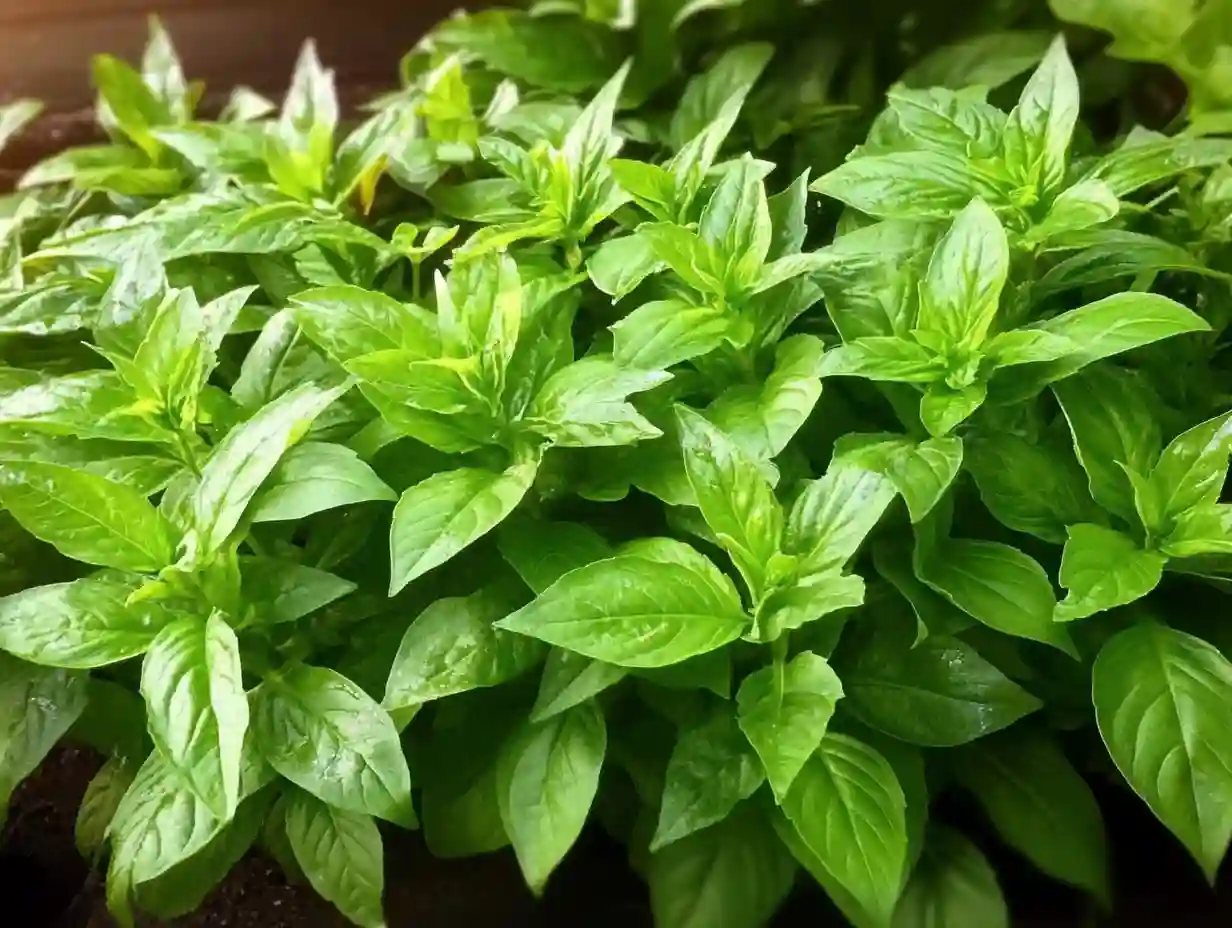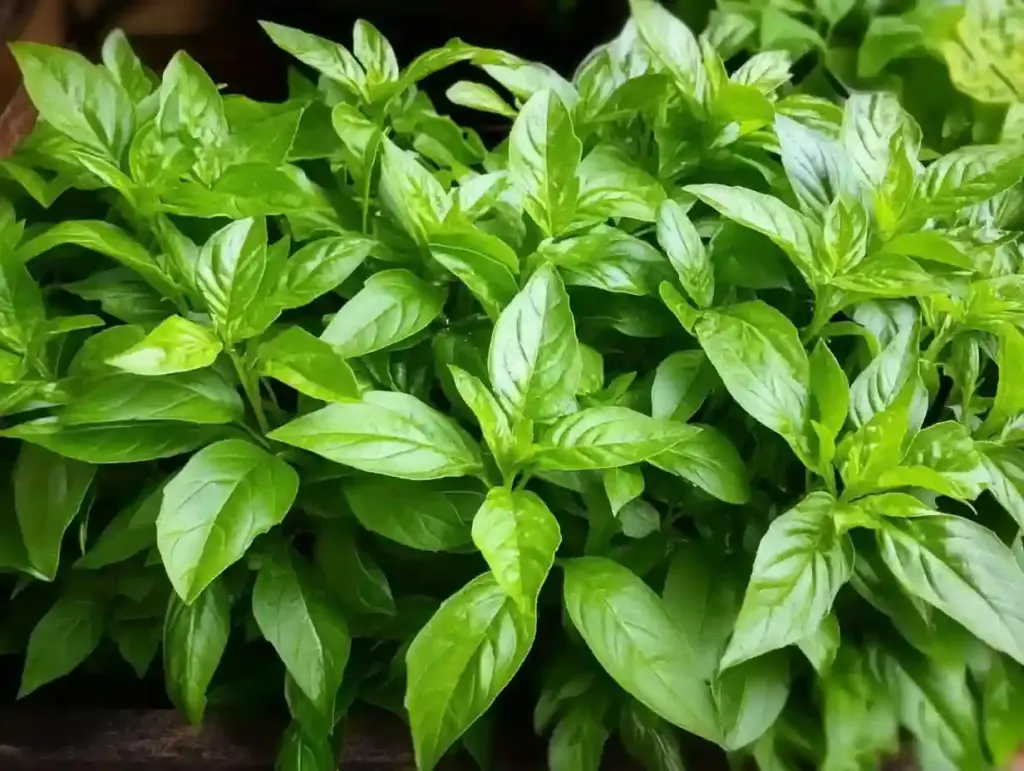Whether you’re dreaming of homemade pesto, topping off a summer caprese salad, or just adding fresh flavor to your cooking, basil is a warm-weather herb that belongs in every garden. It’s fast-growing, aromatic, and easy to cultivate — but without the right care, it can become tall, leggy, and sparse.
Luckily, with a few simple techniques, you can grow lush, bushy basil that keeps producing flavorful leaves from early summer right into fall. Whether you’re planting in containers on your balcony or starting seeds in a garden bed, basil rewards attention with big yields and bold flavor.
In this guide, you’ll learn exactly how to grow healthy basil plants, avoid common mistakes, and keep your harvest going strong — including pruning, watering, light needs, and the secret to never letting it flower too soon.
What You’ll Need to Grow Bushy Basil
Before planting, gather the essentials to give your basil the best possible start. Whether you’re growing from seed or using starter plants, these tools will help your basil thrive.
🧰 Essentials:
- Basil seeds or seedlings (Genovese, Lemon, Purple, Cinnamon, etc.)
- Containers with drainage holes or garden space
- Organic potting soil or light seed-starting mix
- Compost or all-purpose fertilizer
- Watering can or drip irrigation system
- Pruning shears or clean scissors
- Mulch (optional, for water retention)
🌿 Tip: Basil grows fast — mix in a few different varieties for flavor diversity and beautiful foliage colors!
Step-by-Step: How to Grow Bushy Basil
1️⃣ Start from Seed or Seedlings
- Seeds: Use a light, fluffy mix. Keep the soil evenly moist and warm (70–75°F) for fast germination. Provide light as soon as seedlings sprout.
- Seedlings: Purchase healthy young plants with no signs of yellowing or wilt. Transplant into prepared soil or containers once all danger of frost has passed.
2️⃣ Keep Basil Warm
Basil is a tropical herb and hates cold. Wait until nighttime temps are consistently above 50°F before planting outdoors.
- If temps dip, cover your plants or move containers inside (garage or porch).
- Indoors, place on a south-facing window or under grow lights.
3️⃣ Provide Well-Draining Soil
- Use containers with good drainage holes.
- If your planter doesn’t drain well, add a layer of gravel at the bottom.
- Mix in compost for nutrients and aeration.
4️⃣ Water Smartly
- Basil likes moisture, but not soggy roots.
- Water deeply once or twice per week depending on weather — more often for containers.
- Always water at the base of the plant to avoid mildew on leaves.
- Avoid overhead watering and use mulch to retain moisture and suppress weeds.
5️⃣ Give It Plenty of Sun
- Basil needs 6 to 8 hours of direct sunlight per day.
- Outdoors, choose a warm, sunny location.
- Indoors, use a grow light or bright windowsill.
6️⃣ Feed for Bigger Leaves
- Use a balanced organic fertilizer (equal parts nitrogen, phosphorus, potassium).
- Feed every 3–4 weeks outdoors and every 4–6 weeks indoors.
Too much nitrogen can lead to leafy growth but reduce the flavor intensity.
7️⃣ Prune & Harvest Early (and Often!)
Start pinching back basil when the plant has at least 4 sets of leaves. This encourages side shoots and bushier growth.
- Pinch just above a leaf node, not too close to the base.
- Remove flower buds immediately to keep the plant focused on leaf production.
- Use trimmed leaves right away or dry/freeze them for later.
Growing Tips, Common Mistakes & How to Keep Basil Bushy
Basil is easy to grow, but a few smart habits will help you avoid common pitfalls and ensure your plants stay full, flavorful, and productive all summer long.
🌿 Pro Tips for Bushier Basil
✂️ 1. Harvest Often — Even If You Don’t Need It
- Regular pruning is the secret to bushy plants.
- Harvest from the top and pinch just above a leaf pair.
- Early and frequent trimming trains the plant to grow outward, not upward.
🌞 2. Rotate Containers or Adjust Light
- If growing indoors, rotate pots weekly for even sun exposure.
- Outdoors, be sure nearby plants don’t start shading your basil as they grow.
🐝 3. Watch for Flowers
- Basil will naturally try to flower (bolt), especially in hot weather.
- Once it does, flavor changes and leaf production slows.
- Pinch off flower buds immediately to keep growth going.
💧 4. Water Consistently
- Inconsistent watering leads to stress, wilting, or bitter-tasting leaves.
- Stick to a schedule, especially during hot spells.
🧺 5. Dry or Freeze Excess Basil
- Harvesting encourages new growth — even if you’re not using it all right away.
- Dry the leaves for spice jars or freeze them in olive oil in ice cube trays for easy pesto prep!
⚠️ Common Mistakes to Avoid
🚫 Overwatering
Leads to yellowing leaves and root rot. Let the top inch of soil dry before watering again — especially in containers.
🚫 Neglecting Pruning
One of the biggest mistakes! Tall, leggy plants with sparse leaves are usually the result of not pruning early or often enough.
🚫 Poor Drainage
Basil doesn’t like “wet feet.” If soil is heavy or compacted, loosen it up with compost or perlite before planting.
🚫 Skipping Sunlight
Less than 6 hours of light? Expect weak stems and small leaves. If growing indoors, a sunny window alone may not be enough — add a grow light.
By staying ahead of these simple care tips, your basil plants will reward you with weeks (or months!) of fresh, fragrant leaves — perfect for everything from sauces to salads.
Frequently Asked Questions (FAQ)
🌱 How long does basil take to grow?
Basil grows fast — from seed to harvest can take as little as 3 to 4 weeks under ideal conditions. You’ll usually start harvesting leaves once the plant has at least 4–6 true leaves.
☀️ Can I grow basil indoors?
Absolutely! Basil does well indoors if you can provide 6+ hours of sunlight or use a grow light. Keep the plant near a warm, sunny window and rotate it weekly for even growth.
✂️ How often should I prune basil?
Start pruning when the plant is 6–8 inches tall, and continue every 1–2 weeks throughout the growing season. Even if you don’t need the leaves, regular pruning encourages fuller, more productive plants.
🧊 Can you freeze basil?
Yes! Freeze basil leaves whole, chopped, or blended with olive oil in ice cube trays. It’s an easy way to preserve flavor for cooking all year long.
🌼 What happens if basil flowers?
Once basil flowers, it diverts energy from leaf growth to seed production — the leaves may become bitter. Pinch off flower buds as soon as you see them to keep your plant focused on foliage.
Final Thoughts
Basil is one of the most rewarding herbs you can grow — it’s fast, fragrant, and endlessly useful in the kitchen. But if you want lush, bushy basil that keeps on giving, the secret lies in simple but consistent care:
- Prune often
- Keep it warm and sunny
- Water wisely
- Harvest early and continuously
Whether you’re growing it on a windowsill or in a sunny backyard plot, basil can be a flavorful and satisfying addition to your summer garden — and one that keeps your meals fresh and aromatic.
So grab your scissors, start snipping, and let your basil thrive!
🌿 Have a favorite basil variety or tip of your own? Share it in the comments or tag your basil garden photos online — we’d love to see how yours is growing!


